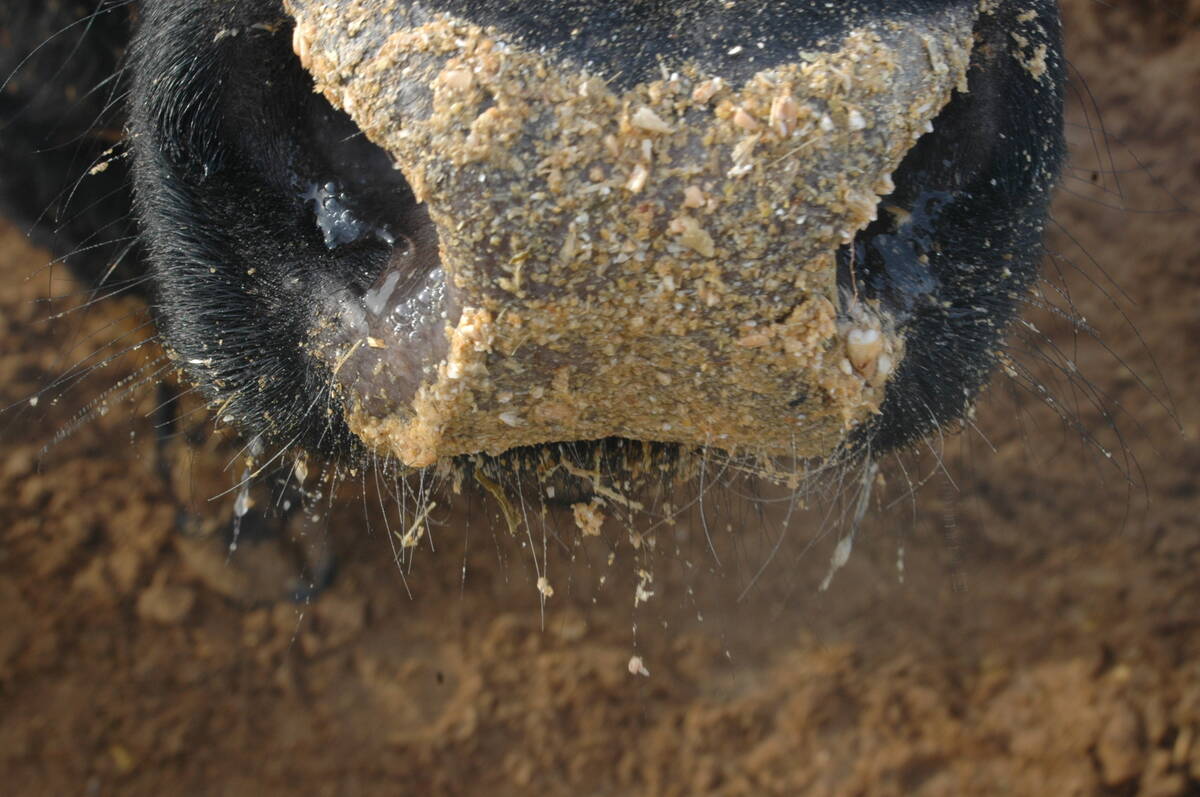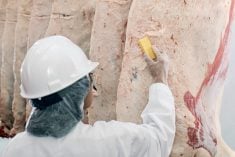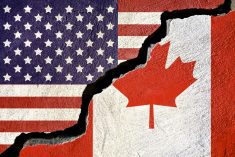Adorning the Christmas dinner table with a succulent beef rib roast is a longstanding tradition for meat lovers in the U.S. and, I daresay, in Canada as well. But American consumers, at least this year, might have to forego this hugely popular holiday item for a lower-priced cut.
This is because wholesale rib prices are currently at record levels and might not decline enough to avoid substitution by other beef items. There tends to be large increases in retail feature activity on ribs in front of Thanksgiving (November 25 this year), as measured by store ad counts and even larger activity heading into Christmas and New Year’s, say analysts.
Read Also

Feed grain update for Canadian beef producers
Factors affecting the feed grain market and what it means for Canadian cattle feeders
More than half the store ad counts are for bone-in rib roasts, followed by bone-in rib steaks and boneless ribeye steaks or roasts. Over the past five years, the average retail feature price on bone-in rib roasts for Thanksgiving ads has been in the area of US$8.10 per lb. to US$8.45 per lb. Average feature prices for Christmas have ranged from near US$7 per lb. to US$7.45 per lb., say analysts.
Wholesale prices on Choice 109E bone-in ribeyes have tended to be in the US$700 per cwt to US$800 per cwt region through September and October, say analysts. The weekly spot market pricing normally runs up to fall peaks in the latter part of November or early December. But with Choice 109E rib prices currently at record levels near US$1,350 per cwt, retailers are looking at the potential of serious negative margins on rib features this fall. Prices are far above last year on all rib items. For example, the light Choice rib price for the week ended September 17 averaged US$608.55 per cwt, up 70 per cent on the same week last year.
Even if ribs do moderate from their record levels, there remains the question of how much upward adjustment in retail feature prices might occur and how that might affect the movement of ribs through those feature periods, say analysts. Some retailers may look at partial substitution of lower-priced loin steaks to moderate margin losses on beef in these holiday periods, they say.
Rib roast lovers thus face the unfortunate consequence of wholesale beef prices that will remain far above last year’s levels well through October. USDA’s overall comprehensive cut-out (cuts, grinds and trim) for the week ended September 17 averaged US$314.61 per cwt. This was down US$8.67 per cwt from the prior week but was still up 47 per cent on the same week last year. The price of 50CL fatty trimmings was up 221 per cent while the price of 90CL lean manufacturing beef was up 27 per cent. So even ground beef prices are on the rise.
The high price of beef forced retail sales to slow significantly during September as consumers faced sticker shock. The bulk of the price advances were predominantly in middle meat items. Given the per-pound price increases, the per-package cost is more than consumers are willing to pay or can afford, says analyst Andrew Gottschalk.
Retail beef prices kept rising in August and are not likely to peak this year until October. USDA’s Choice beef price in August averaged US$7.64 per pound, up 11 cents from July. The All Fresh beef price averaged US$7.14 per pound, up four cents from July. Prices normally go down from July to August and this was the biggest increase in these two months since 2014, say analysts. Retail prices were expected to be higher again in September. Beef lovers are thus being forced to buy lesser cuts and more pork.
















